The Estuary Program works to monitor and restore habitats to protect them for the benefit of humans and the environment. Eelgrass is of interest to our program because of the multiple roles it serves in the bay. Our eelgrass efforts historically included bay-wide mapping and detailed monitoring of the beds. We became interested in macroalgae, or seaweed, in the bay due to the concern that it can crowd out eelgrass. A better understanding of macroalgae patterns in our bay supports our understanding of eelgrass health.
How We Monitor Macroalgae
Two years ago, the Estuary Program began monitoring macroalgae abundance at six bay sites. The goal of this program was to develop a better understanding of the interaction between macroalgae and eelgrass. Our bay monitoring efforts showed an increase in macroalgae throughout the estuary just as eelgrass was making a comeback.
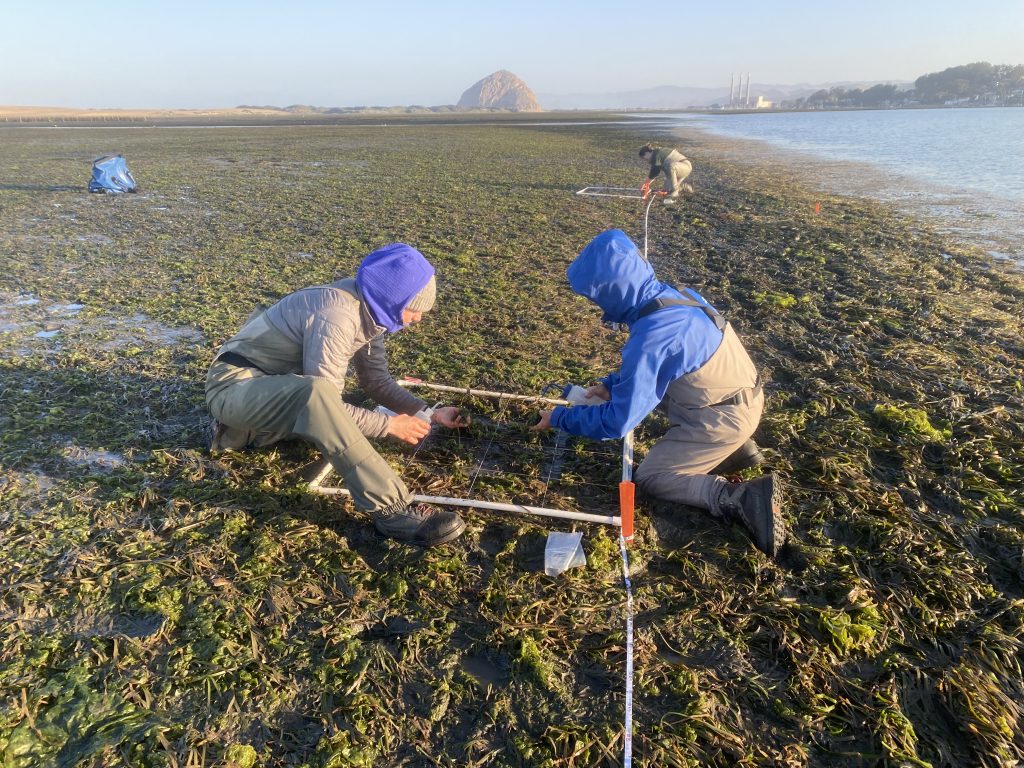
To monitor macroalgae, staff measure the spatial coverage of macroalgae at each site and collect macroalgae samples. These samples are then dried and weighed to measure their biomass. We conducted six surveys between May 2023 and February 2025 during the winter, spring, and summer seasons. For more information on the study design and methods, check out our first blog post covering this project.
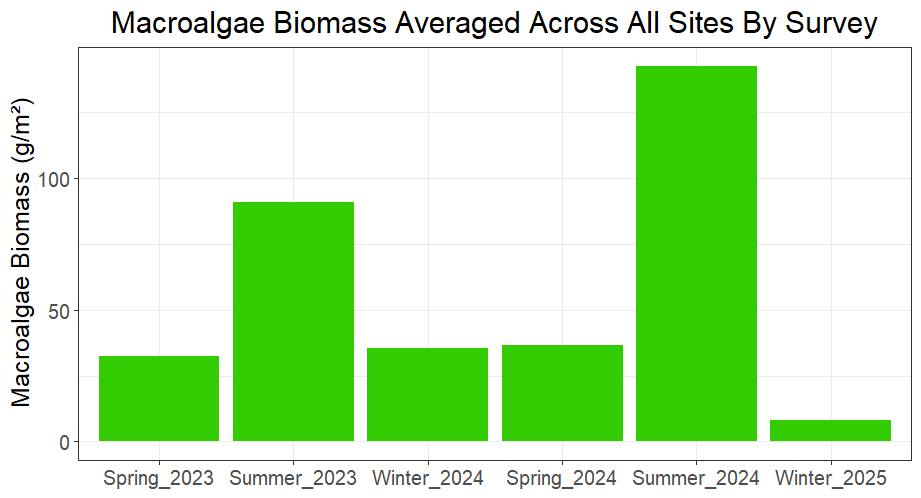
In other areas with eelgrass, there were numerous cases where thick mats of macroalgae smothered eelgrass beds. This smothering effect contributed to eelgrass decline. Thus, we expected the relationship between macroalgae and eelgrass to be at odds as they battle for the precious sunlight required for photosynthesis. But after our first year of monitoring, our results showed the opposite. Macroalgae abundance was increasing as eelgrass increased, possibly because macroalgae becomes tangled within the long eelgrass blades during tidal movement. More dense eelgrass beds tended to have more macroalgae present. For a more in-depth recap of the drivers contributing to macroalgae abundance, you can review last year’s blog post.

Trends in the Data
In both years of monitoring, we saw the same seasonal trends of high macroalgae biomass in the summer and low biomass in the winter. While all sites followed this trend, the amount of macroalgae at the peak differed between the sites. Half of our monitoring sites had an increase in macroalgae in summer 2023 compared to summer 2024. The other half experienced a decrease. It is challenging to point to a specific reason for the differences given the complexities associated with macroalgal distribution, but it does appear that site-specific changes in eelgrass density are playing a role.
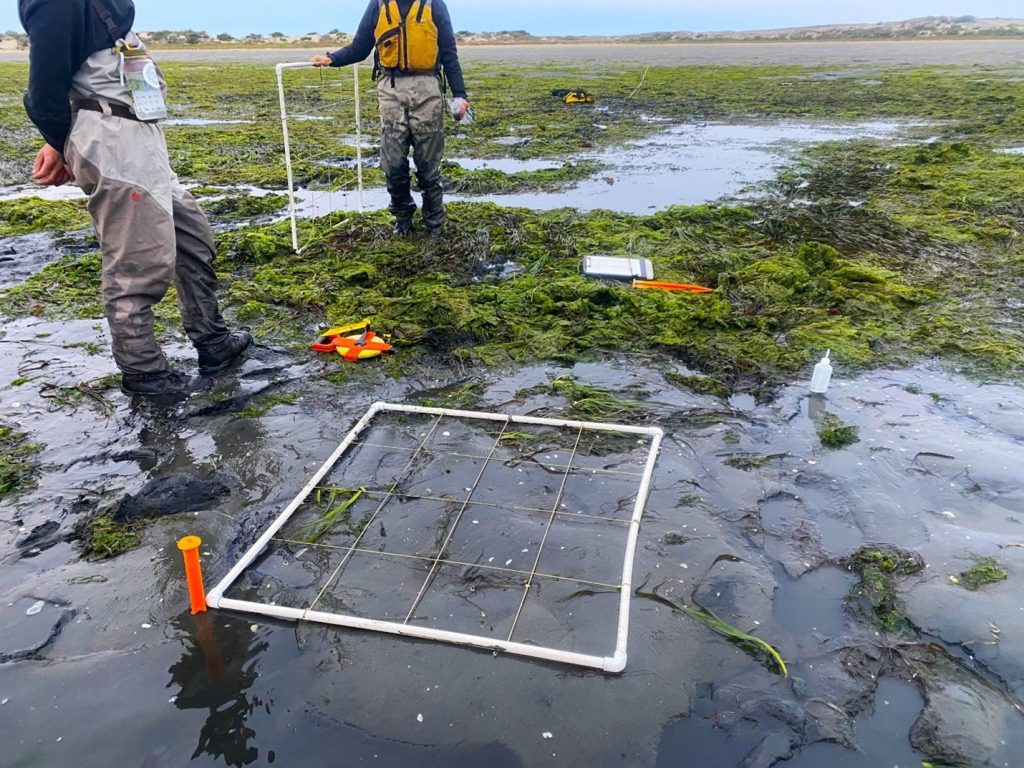
At sites where we conduct both macroalgae and eelgrass monitoring, we found that macroalgae biomass increased in year two as eelgrass density increased. At other sites, macroalgae decreased while eelgrass density decreased. At the Reference Bed site near the sandspit towards the front bay, we saw a 40% increase in eelgrass density. We also saw summer macroalgae abundance more than double. At State Park Marina, we saw a 44% decrease in eelgrass density. We also noticed a drop in summer macroalgae abundance to less than half of the previous year. While this is not a definitive analysis, these results are consistent with our past observations of denser eelgrass beds retaining macroalgae.
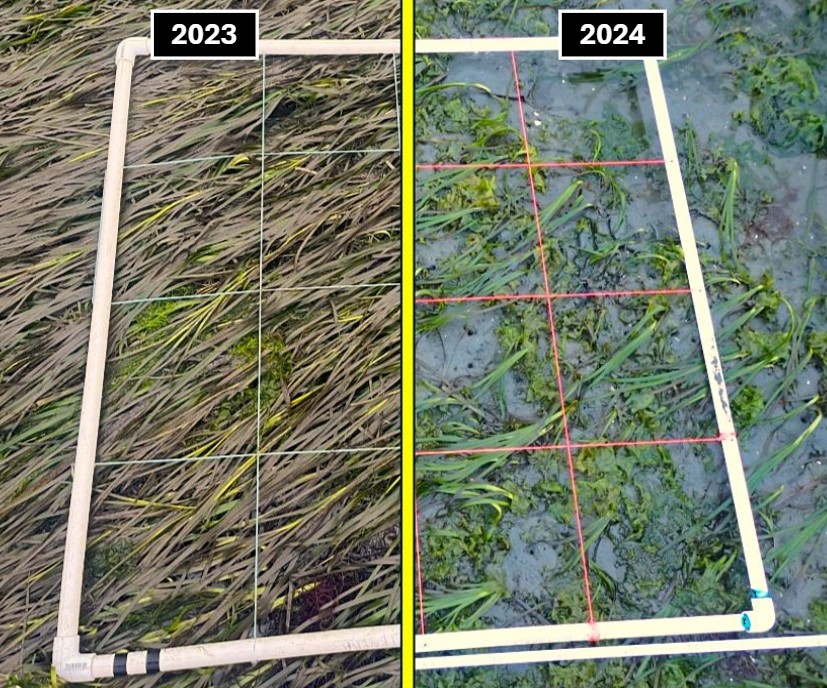
We’ve focused a lot on the way in which eelgrass shapes the distribution of macroalgae. However, this is only one side of the interaction. So far, we haven’t found any indication that large macroalgae mats are negatively impacting eelgrass in Morro Bay. However, it would be short-sighted to assume this means that macroalgae have no impact on eelgrass at all. It is possible that the accumulation of macroalgae over longer time scales like years, potentially in conjunction with additional environmental stressors, could have more lasting negative impacts on eelgrass health.
Upcoming Project Changes
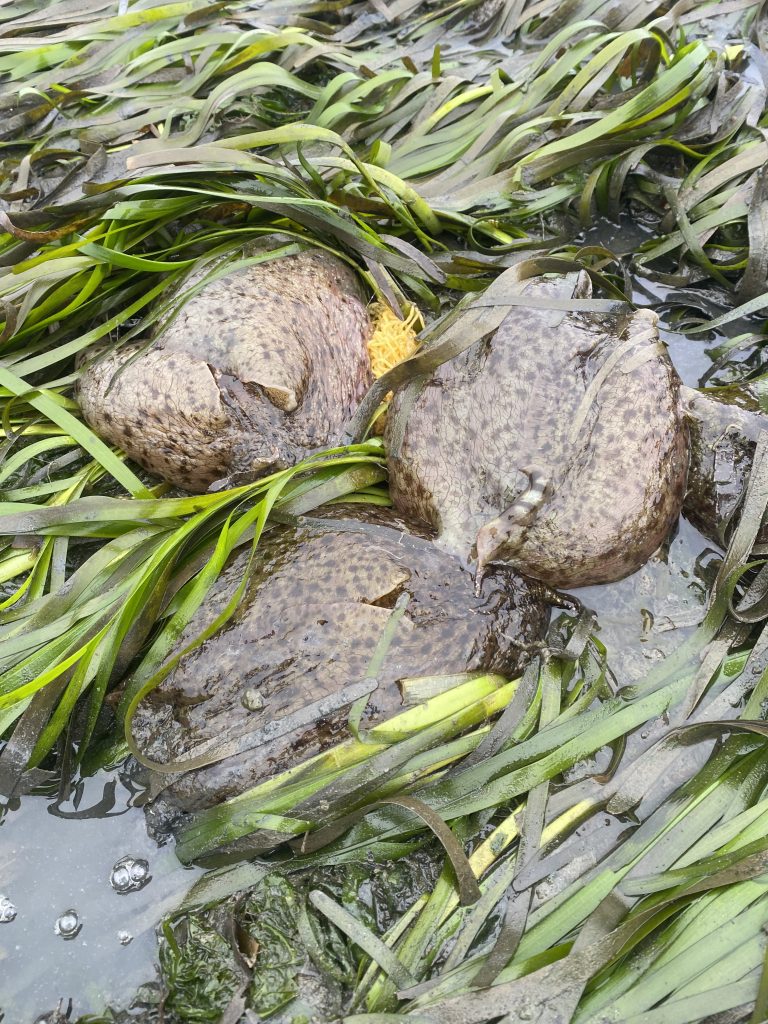
Based on the data we’ve collected to date, we’ve determined that we can limit our macroalgae monitoring to summers to capture the yearly peak in macroalgae biomass. We still have much to learn, and a longer-running dataset will help us better understand the trends and interactions. We are continuing to analyze results from the first two years of the project and will provide an update in our 2024 Eelgrass Report, which will be posted to our online library later this year.
Help us protect and restore the Morro Bay estuary!
- Donate to the Estuary Program today and support our work in the field, the lab, and beyond.
The Estuary Program is a 501(c)3 nonprofit. As a result, we depend on funding from grants and generous donors to continue our work. - Support us by purchasing estuary-themed gear from ESTERO. This locally owned and operated company donates 20% of proceeds from its Estuary clothing line and 100% of Estuary decal proceeds to the Estuary Program. Thank you, ESTERO!
- Purchase items from the Estuary Program’s store on Zazzle. Zazzle prints and ships your items, and the Estuary Program receives 10% of the proceeds.
- Subscribe to our seasonal newsletter: Between the Tides!
- We want to hear from you! Please take a few minutes to fill out this short survey about what type of events you’d like to see from the Estuary Program. We appreciate your input!